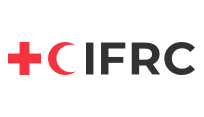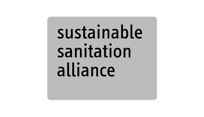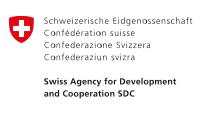Vermicomposting is a biological aerobic process in which organic matter is digested by worms and microorganisms. The products are vermicompost (or worm compost). Vermicompost contains water-soluble nutrients and is an excellent, nutrient-rich organic fertiliser and soil conditioner.

Vermicompost is a mineralised, nutrient-rich, microbiologically active organic amendment. Vermicomposting depends on the interaction between microorganisms and earthworms. Microorganisms in the waste prepare it for the earthworms through the first step of aerobic degradation. Earthworms can process a broad range of organic waste but do not tolerate food waste such as meat and fish, grease and oils and salty and vinegary foods. They also dislike onions and spicy peppers. Appropriate earthworm species for vermicomposting are surface worms that easily adapt to different waste types and conditions, feed and digest rapidly and have a fast growth and reproductive rate. Among these, Eisenia fetida is the most frequently used species after Lumbricus rubellus, Eisenia andrei, Perionyx excavatus and Eudrilus eugeniae, popular in tropical and subtropical countries. The final products are vermicompost and the worms themselves. Worms can be sold or used as high-protein animal feed or even for their medicinal properties. Another vermicompost by-product is a liquid fertiliser which derives from leachate draining from the worm bins.
Design Considerations
Vermicomposting is done in bins or beds, which can be shallow containers. The surface area of the bin or bed depends on the amount of organic waste. Holes or mesh are needed for aeration. A spout or holes in the bottom can be added to drain excess liquid (i.e. liquid fertiliser) into a tray for collection. As worms prefer the dark, a cover for the bins is needed to keep them shaded and protected. To save space, bins can be stacked vertically but must still allow fresh air to circulate. Roofing for shade and rain protection is recommended but a walled enclosure is not required.
Materials
Vermicomposting bins and beds are often constructed of wood or plastic (recycled PET or polypropylene). Plastic bins require more drainage than wooden bins but wood will eventually decay and need replacing. Styrofoam and metal materials should be avoided, as well as cedar wood which contains resinous oils. Covers protecting the worms can be made from local materials such as wood, plastic or metal sheets. Robust grinders can shred larger pieces of input materials. Bedding materials, such as shredded newspaper, cardboard, coconut coir or peat moss, provide a habitat for the worms and help to manage moisture levels. It should be moistened before adding the worms and be damp but not soggy.
Applicability
Vermicomposting can be done at different scales, from household to large-scale facilities. It can be considered a viable option in the stabilisation and recovery phases where there is a constant source of well-sorted organic waste and space available. Experience has shown that vermicomposting facilities operate best when established as a business venture with vermicompost, liquid fertiliser and harvested worms as marketable products that can be sold and generate revenue to support cost recovery. The revenue, however, cannot be expected to cover the full cost of the service.
Operation and Maintenance
A vermicomposting facility requires staff knowledgeable about the worms’ life cycle and preferences. The worms’ conditions and operating parameters should always be carefully monitored. Key parameters include the quality and quantity of the input material, feeding rate, a stable temperature (worms like between 13-25°C), moisture and oxygen content in the vermicompost and the general health of the worms. The worms can process their body weight of waste per day. However, a feeding rate of 50% of worm mass per day is adequate for a good operation. It is important to introduce the waste as feed for earthworms in shallow layers (> 10 cm), balancing green (nitrogen-rich) and brown (carbon-rich) materials to maintain a healthy composting environment. The layers should be placed in the bins or beds and the worms fed at least weekly. Overly thick layers will increase the temperature in the waste layer or cause anaerobic conditions; both situations are unfavourable for the worms. If the bedding gets too dry, water needs to be added. If the bedding gets too wet, dry material can be added, such as paper strips. Of the volume of input material processed, about 50% by mass can be harvested as vermicompost. The compost should be occasionally stirred to promote aeration and prevent anaerobic conditions which can lead to unpleasant smells and harmful bacteria.
Health and Safety
Unlike composting T.1, pasteurising temperatures cannot be reached as worms and bacteria are sensitive to extreme temperatures. Worms can greatly hasten a reduction in total coliforms, but pathogenic inactivation during vermicomposting depends on the worm species used. Although certain worm species can significantly reduce pathogen levels, complete elimination is not guaranteed. Hence waste containing high pathogen levels may require further treatment to produce a pathogen-free vermicompost. Health risks can be minimised if adequate control measures are consistently practised and workers adopt basic precautions and hygiene practices and wear personal protective equipment.
Costs
The cost of building a vermicomposting facility varies depending on the size of the facility and the cost of local materials and earthworms. However, costs are generally low. The main costs to assess are for the overall operational requirements, including transport and the supply of organic solid waste.
Social Considerations
Ensuring that the vermicompost product conforms to local guidelines and standards X.1 is a prerequisite for implementation; if not, different treatment processes should be identified.
Key Decision Criteria
Input Products
Organic Garden/Wood Waste
Organic Food/Kitchen Waste
Output Products
Vermicompost
Worms
Response Phase
Application Level
Management Level
Space Required
medium
Technical Complexity
low
Objectives & Key Features
Vermicompost production, Nutrient recycling, Waste diversion from disposal and GHG mitigation
Strength & Weakness
- Simple robust technology
- Can be built and maintained with locally available material
- High-value soil amendment
- Requires a larger, well-located land area
- Only limited organic waste types are suitable and a pre-composting phase is recommended
- Worms are sensitive to environmental conditions (too hot, too cold, too wet, too much sunlight and overcrowding) and these must be well controlled






